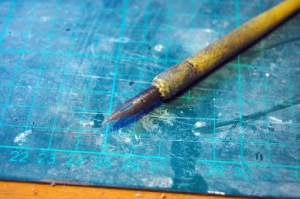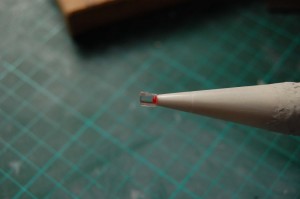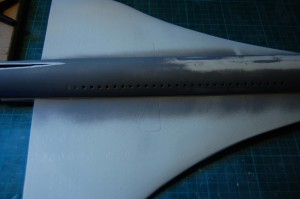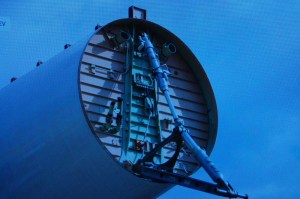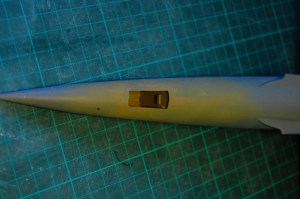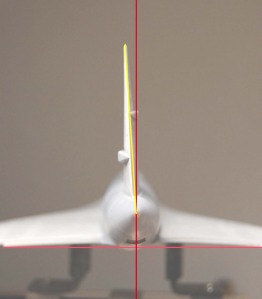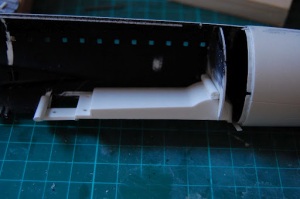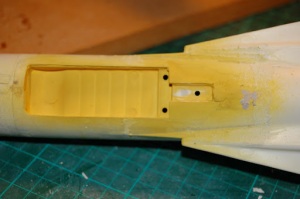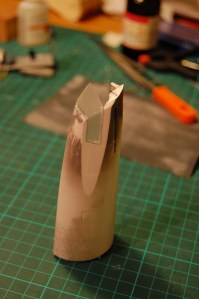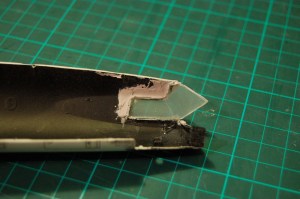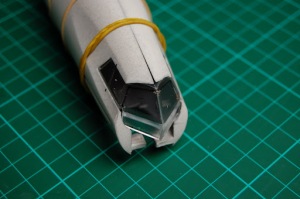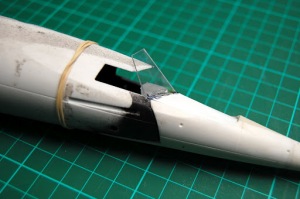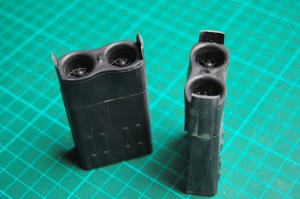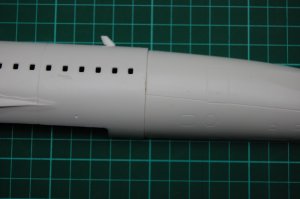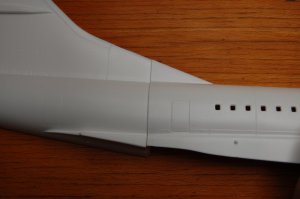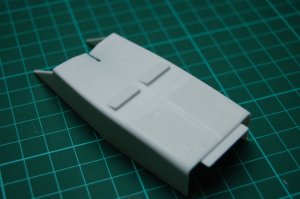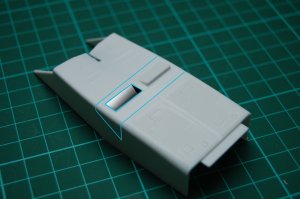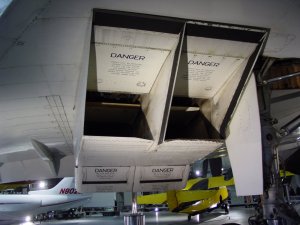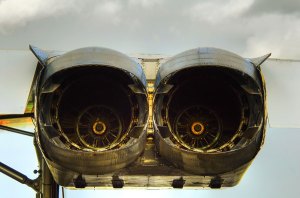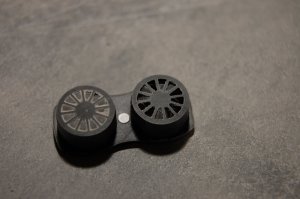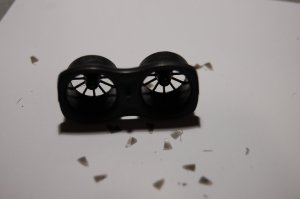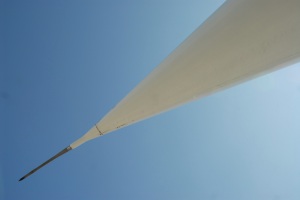Last night I made a bit of an effort on the main gear. Just a bit of detailing with foil strips and stretched sprue. I sprayed some primer over and thought I could pop the wheels on to see how it looked…

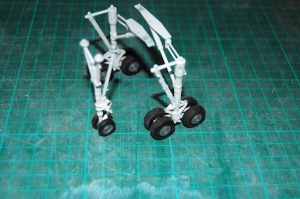
…then I thought I could dry fit the undercarriage to the body, also to see how that looked…
 …and it looked good.
…and it looked good.
The nose wasn’t as high as I thought it would be and I may reconsider cutting down the front leg. I purchased a set of resin wheels and tyres from Hannants because I wasn’t happy with the results of using some wet & dry to shape the vinyl tyres supplied. The wheel hubs aren’t too bad, but lack the detail on the inner faces too. The resin set is primed, but I’m not sure what colour to use. I’m not sure about using a metallic silver as it can look unrealistic in this scale. I’ve been thinking about using a light grey instead, but I’ll experiment a bit first. Also the shock absorber will need something to simulate a highly polished surface, perhaps some foil. The best method for some parts of the undercarriage would be telescopic tubing, but I don’t have anything at the correct size, and can’t face paying more for P&P than the contents over the internet. When I get a large order together I’ll add some tubing to it. There’s always something.
The tailfin is back on and now at 90˚ to the wings (and in line along the fuselage!). I’ve used polyweld type liquid glue and filled the gap with stretched sprue. You may notice that I’ve rescribed the panel lines on the fin so that they line up on both sides.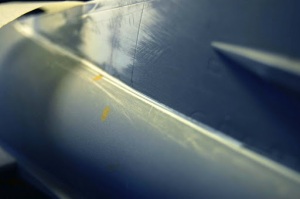 As a side note, I use a fine scribing nib (I think it’s a mapping nib) and holder to apply the liquid. I had a few kicking about from my art school days, but only plastic ones, so this one’s starting to fit the neck of the bottle really well… I’ve found it holds enough glue and is accurate to put it where you need it. You need to dip regularly, but I’ve never had too much running all over the work.
As a side note, I use a fine scribing nib (I think it’s a mapping nib) and holder to apply the liquid. I had a few kicking about from my art school days, but only plastic ones, so this one’s starting to fit the neck of the bottle really well… I’ve found it holds enough glue and is accurate to put it where you need it. You need to dip regularly, but I’ve never had too much running all over the work.
I’ve seen some nice wooden ones on the net, which may replace this one somewhere down the line.
